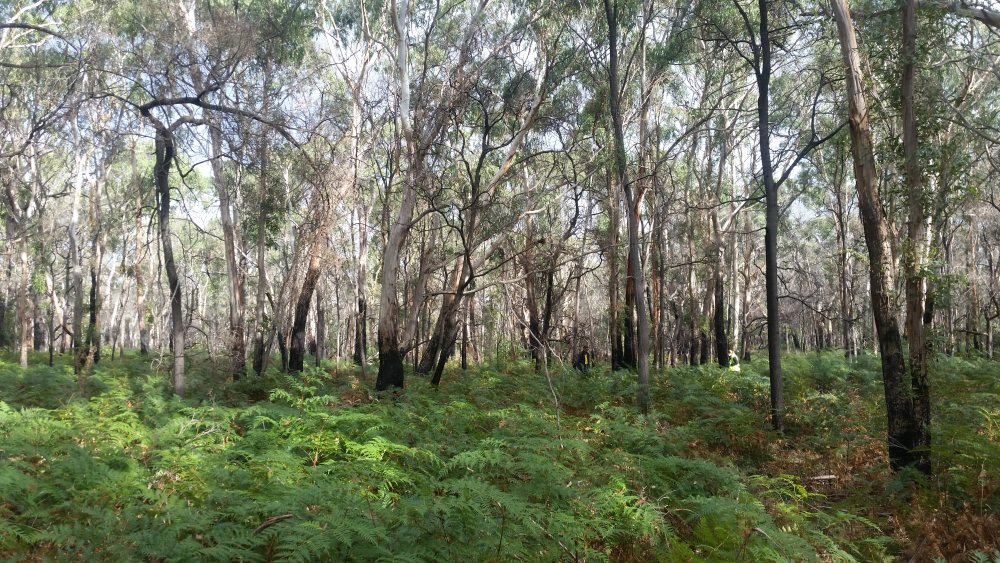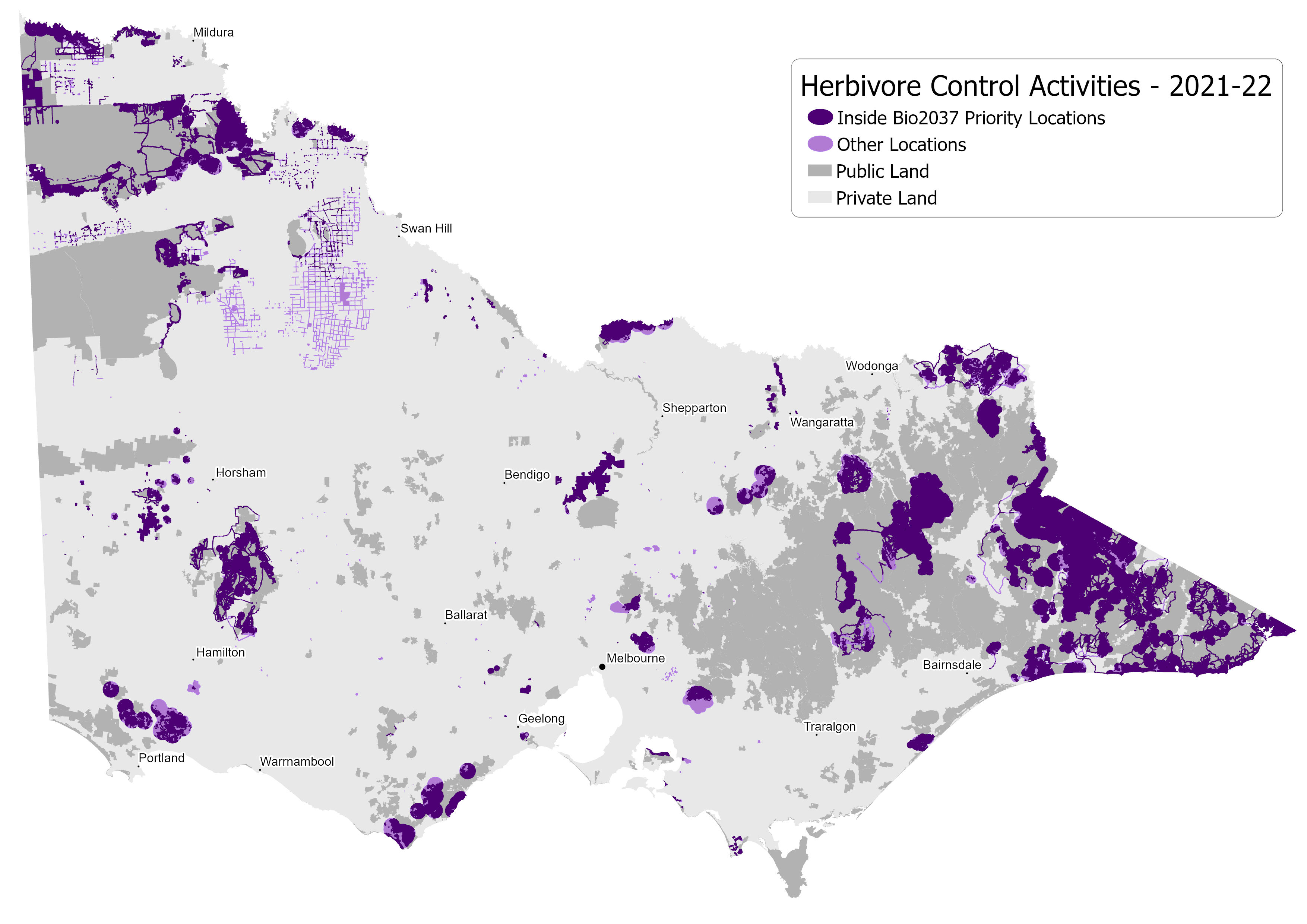Pest herbivore control achievements in 2021–22
- About 2 million hectares of pest herbivore control achieved in 2020–21 and 2021–22 - an area 10 times the size of Port Phillip Bay.
- Management of feral pigs, goats, horses, rabbits and wild deer has increased every year since 2018–19 in Biodiversity 2037 priority locations, reaching 1.6 million hectares in 2021–22.
- Pest control activities are delivered in partnership with other government agencies, Traditional Owner organisations and private landholders.
Controlling wild deer and feral pigs is healing UNESCO World Heritage Site after fire
On Gunditjmara Country in south-west Victoria, the Budj Bim Cultural Landscape contains one of the oldest and most extensive aquaculture systems in the world.
The Gunditjmara have used these systems to harvest eel and fish for at least 6,600 years.
The wetlands and surrounding environment provide valuable habitat to native species. Several critically endangered orchids and the Plains Yam-daisy grow here. The Yam-daisy is a traditional food source.
The 2019–20 Black Summer bushfires burned 68% of the landscape. Work has been underway since to regenerate the Manna Gum woodlands and help native plants and animals recover.
Wild deer are especially damaging after fire because they trample and feed on new growth and damage Manna Gum saplings.
Feral pigs damage native plants, degrade the wetlands, and threaten the ancient aquaculture systems and other important cultural sites.
The collaborative invasive species control by DEECA, Parks Victoria, Gunditj Mirring Traditional Owners Aboriginal Corporation and Winda-Mara Aboriginal Corporation is helping this globally significant place to heal, protecting it for future generations.

Manna Gum woodlands in Budj Bim Cultural Landscape
Herbivore control activities

Figure: 2021–22 activity data, pest herbivore control
Pest herbivore control
- Wild deer
- Feral horses
- Feral pigs
- Feral goats
- Rabbits
Annual target: 4 million hectares in Biodiversity 2037 priority locations
Table: Area (hectares) of pest herbivore control across Victoria for 2018–19 to 2021–22
| Annual progress* | 2018–19 | 2019–20 | 2020–21 | 2021–22 |
|---|---|---|---|---|
| Priority locations (ha) | 327,382 | 888,757 | 1,470,578 | 1,632,390 |
| Other locations (ha) | 225,730 | 785,381 | 749,063 | 311,717 |
| Statewide total (ha) | 553,112 | 1,674,138 | 2,219,641 | 1,944,107 |
*These progress figures are a compilation of data from organisations across the environment sector. While the Victorian Government is a major contributor to this work, many of the projects from which this data is derived are undertaken by others.
Recent program announcements by the Victorian Government will drive greater progress toward this target.
These include the: Peri-urban Deer Control Plan, East Deer Control Plan and West Deer Control Plan.
There is continued support for community-driven action including Landcare and $32 million for 36 large-scale conservation projects announced in 2022 and 2023 under the Protecting Biodiversity Program.
Page last updated: 13/08/24